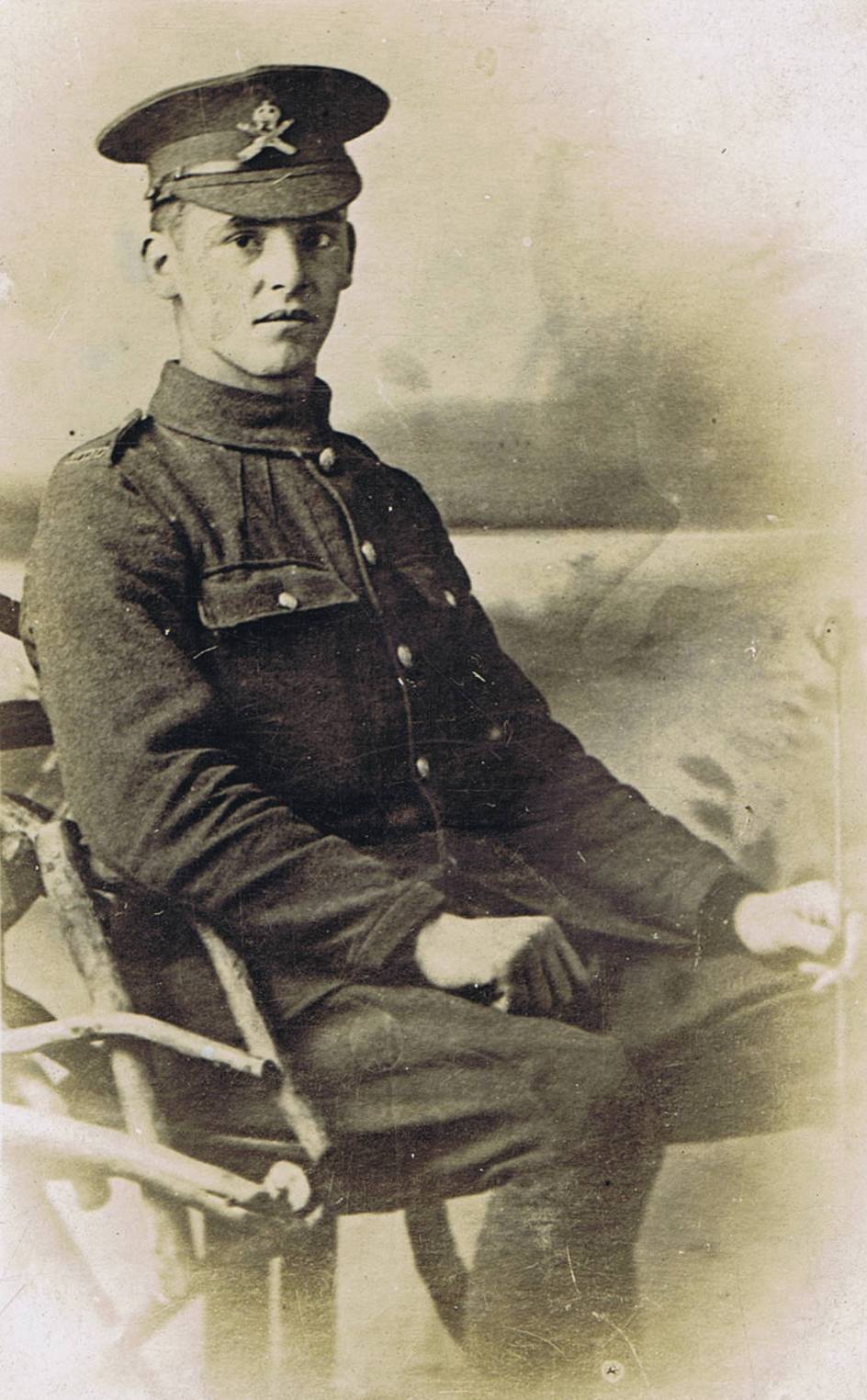
Submitted by Paul Elliott.
George was a Great Uncle, the younger brother of my paternal Grandmother. I had no knowledge of his existence until recently. He lived in Church Street, Rothwell, Leeds, was married in December 1914 to Jane Ann Ambler and worked as a miner.
He joined the Kings Own Yorkshire Light Infantry (regimental number 25522) in September 1915 at Pontefract. He was transferred to the Machine Gun Corps (35672) in December 1915 and went to France in May 1916 with the 40th Company. He is one of the people whose Full Service Record survives. It shows that he had two sons, Alan born in 1915, and George born in March 1917. He died of wounds in April 1918 having served in France and Belgium. He is not commemorated on the Rothwell War Memorial. He was buried at Outtersteene Communal Cemetery Extension, Bailleul.
His wife received a pension of 25 shillings and 3 pence a week and inherited £1- 6s with a gratuity of £11-10s. He appeared on the Yorkshire Evening Post Roll of Honour on 4th May 1918, described as a driver and having died of wounds.
Explore more memories from the ribbon
-
Marlein Family
The German invasion through Belgium at the outset of WW1, as part of the infamous Shleiffen plan, resulted in the inevitable refugees. Of these refugees it is estimated that about 250,000 would end up spread throughout the British Isles. One of these families would arrive at Hawes station and take up residence in nearby Gayle: the family Marlein. Charles Marlein was from Ostend and was a sailor on the mail steam ships that crossed the channel between Ostend and Dover. During his spare time in Ostend he led an accordion band and would even entertain the passengers who travelled on the ships. As war gripped Belgium the family travelled to the safety of England. Charles, his wife Natalie and children Emmerance, Margaret, Elvier, Madeleine, Theophiel (Phil) and Francis eventually settled in Gayle. Their eldest son, Auguste, was fighting in the Belgium Army and would later die for his country. The family was billeted at Clint’s House, Gayle. The local people rallied round to support them by supplying them with furniture, bedding, crockery and the like. It was a kindness they never forgot. Two of their daughters found work with a local tailor called Martland. Sadly, their youngest son Francis died from tuberculosis and was buried at Hawes. In early 1919 the Marlein family returned to Belgium but Phil could not settle. He returned to the Dales and worked for a farmer at Swathgill Farm. He married a local girl and settled in Gayle where Phil worked delivering animal meal to…
-
James Allen
Judith Farrah told us about her great-grandfather James Allen, who’s joinery business contributed to the war effort on the Home Front. “James Allen was born in 1855 in Newbiggin, Richmond. He was originally called James Thistlethwaite but changed his name to Allen, which was his stepfathers name. He apprenticed with William Raworth, learning to be a joiner, and married his daughter Matilda. By 1901 he had set up his own joinery business known as James Allen & Son Ltd and worked on the Kursaal (later known as The Royal Hall) in Harrogate.” During the First World War, James did not join the armed forces but used his joinery business to create boxes for munitions. Static trench warfare required huge numbers of shells; the First World War became a war of production. Hundreds of manufacturing companies, including James’, were commandeered for munitions production. As men were sent to the trenches, women moved into the factories. Some factories’ workforce was almost entirely female, and this was true for James’ business.
-
Metcalfe Close
Submitted by Pat Burgess. Ralph Metcalfe and Elizabeth Close were possibly unmarried when their eldest son was born towards the end of 1893 at Gunnerside. Hence he was given his father’s surname as a christian name and his mothers surname name. Ralph and Elizabeth were both born in Swaledale, he in Muker, and she at Melbecks. In 1901 the family, which now included another two sons and two daughters, was living at Fell House, Hartley, Nr. Kirkby Stephen. Metcalfe enlisted at Richmond, as it appears he was working at Browson Bank Farm, on the A66, at that time. His Battalion was sent to fight in Palestine, where sadly he contracted malaria and died on 14 June 1918. He is buried in Gaza War Cemetery.
